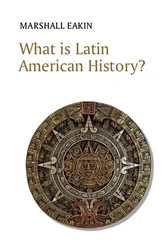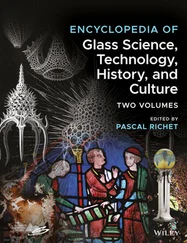While scholars had previously turned their attention to visual studies with an emphasis on photography, film, and television, new work has begun to appear on the impact that digital forms and formats are having on Latin American culture in general and literature in very specific ways. Several of the new essays in this second edition of the Companion capture both the growth in visual forms of communication as well as the transformative and pervasive presence of digitization of the world. To the surprise of many a reader, it seems that the very vaunted effect of the production of a posthuman culture due to digitization of everyday life cannot be so easily detected in Latin America, as the evidence shows that what appears to be emerging is rather a mediatized sensibility. In the Introduction to their Technology, Literature, and Digital Culture in Latin America: Mediatized Sensibilities in a Globalized Era (2016), Matthew Bush and Tania Gentic write that: “It becomes clear that popular access to ever-growing, ever more intricate, networks in the Southern Hemisphere has not produced a new posthuman subjectivity. Rather we seek to demonstrate that the convergence of literary and technological media formats brings the body and the emotion of the spectator to the fore in new ways, even when using the same convergence of affect and ideology that occurs whenever an imaginary about technology circulates to produce subjects and communities” (1–2). It would seem that the power of digitization has been met with some irreverence and that the results of this encounter remain to be seen although it is ongoing, the impact is palpable in multiple ways, and scholars are paying close attention.
Concomitant with the production of new objects, new circuits of transmission, and consumption, there is of course the appearance of a new public. This public, among other things, is no longer wedded to or dependent on print culture as it once was. Take for example the graphic novel Zé Ninguém by the Brazilian artist Alberto Serrano. The book is made up of photographs of about 150 pieces of street art intervention that Serrano performed on walls, doorways, and underpasses in the city of Rio de Janeiro. The series of photographs are arranged into panels which together stand for a narrative that tells the story of the homeless Zé Ninguém in search of his lost love Ana. Edward King in his “Between Street and Book: Textual Assemblages and Urban Topologies in Graphic Fiction from Brazil” (2018) points out that “ Zé Ninguém performs a parallel between the assemblages that connect books to other media and an urban context that is composed of assemblages connecting local actions and events with global flows of images as well as human and non-human forms of agency” (223). King points out that street comics are “read” in nonlinear, partial, and fragmentary ways (224). In contrast with the book, since there is no prescribed order, every reading of the “novel” is not only different but also evanescent. Due to the precarity of graffiti, some works disappear altogether as soon as they are created (224). King observes that “Increasingly, graffiti and street artists produce work to be photographed and posted on line. The demands of online platforms . . . actively shape the work rather than merely providing a neutral vehicle for it. Artists increasingly produce images that are easily ‘shareable’ and ‘tagable’” (227). The Zé Ninguém quest reaches its apogee when his image goes viral and raises his hope that maybe Ana will “see” him. Zé Ninguém announces to his internet followers that “ Nossa selfie bombou! ” (Our selfie has gone wild!) (227), affirming the global, public connectivity now available.
This new public is capable of decoding and consuming texts in multiple media, in an infinite variety of forms, formats, and materialities. Although this new public itself is variegated, divided by generations, degrees of approximations marked by access to the computer or cell phone, and endowed with different degrees of education and sophistication, there is no question that the smartphone has leveled down all previous differences of class and education in access to information, arts, forms of communication, and the capacity to perform and communicate on line. This fact creates new publics and transforms the existing publics in a constant flow of new appearances. The interpretive capacity of this new public no longer depends on academic training or instruction. The appreciation of new and old aesthetic forms has entered a free fall atmosphere in which multiple interpretations and preferences can hold on the same day in the internet. The history of taste and canon building has entered an unparallel transformative stage in which Indigenous video competes with novels that dwell on the deepest exploration of the abject while mimicking the formats of email communication.
This huge demotic new dimension of mass culture has proven a challenge and stimulus to the well-established forms and institutions of print culture, of which literature was and remains the crown jewel. Literature retains its special capacity to invent credibly the existence of new subjectivities, while at the same time remaining aware of its own discursive status. Literature has been aware of the possibility of its own dissolution throughout the twentieth century as each avant garde wave challenged the terms of representation forged by the previous generation, only to emerge with the power of unthinkable forms and discourses. Digitization is not a challenge only to literature. All the art forms, from music to painting, are subject to the same forces of unlimited reproduction, fragmentation, decomposition, and recomposition brought about by the power of a world without originals. Will the digital age transform literature beyond recognition or will it open new spaces for the unique and indispensable critical capacity of literature?
Perhaps at this juncture we need to say, with Borges in 1930, that we ignore if “ la musica sabe desesperar de la musica, y si el marmol del marmol, pero la literatura es un arte que sabe profetizar aquel tiempo en que habra enmudecido, y encarnizarse con la propia virtud, y enamorarse de la propia disolucion y coretjar su fin ” (Borges 1972, 205). Reading the several essays here dedicated to moments when literature’s awareness of itself surges into unprecedented new perceptual coordinates, new narrative forms, unimagined dialogues with and fictionalization of other forms of representation such as cinema, photography, and digitization might provide some sense of the directions that literature, and culture at large, might take in Latin America as it faces not just another imperial thrust from the West but rather the self-claim made by the Chinese with regard to their having become a world power on a par with the West. Will Latin America face yet another cycle of extractive capitalism, as the war for water seems to indicate? How will a new ecological awareness and strategy maneuver the economic, political, and cultural influence of China? What role will the West play in postcolonial spaces as it struggles with the East? This volume certainly opens onto uncharted waters even though it carries the weight of more than 500 years of cultural struggle and creation in “Latin America.”
1 Bill Ashcroft, Gareth Griffiths and Helen Tiffin . The Empire Writes Back: Theory and Practice in Post-colonial Literatures . London and New York: Routledge, 1989.
2 Borges, Jorge Luis . Obras Completas 1923–1972. Buenos Aires: Emece Editores, 1972.
3 Bush, Matthew and Tania Gentic, Eds. Technology, Literature, and the Digital Culture in Latin America: Mediatized Sensibilities in a Globalized Era. New York: Routledge, 2016.
4 King, Edward . “Between Street and Book: Textual Assemblages and Urban Topologies in Graphic Fiction from Brazil,” in Latin American Textualities: History, Materiality, and Digital Media. Eds. Heather J. Allen and Andrew R. Reynolds . Tucson: University of Arizona Press, 2018.
Читать дальше












